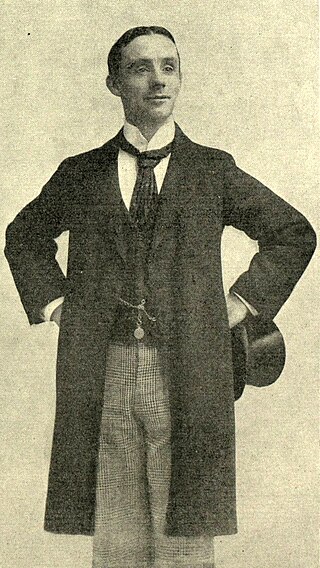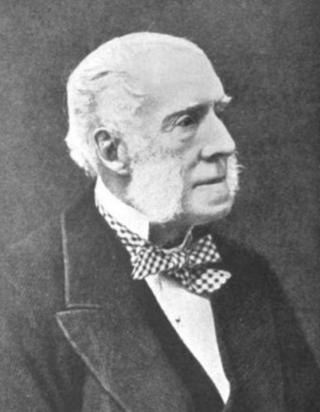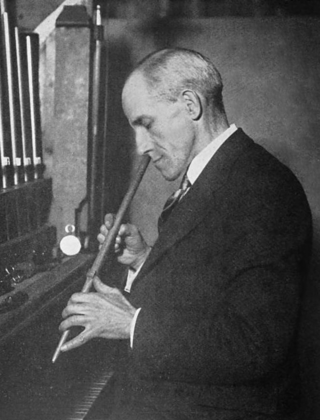
Holborn, an area in central London, covers the south-eastern part of the London Borough of Camden and a part of the Ward of Farringdon Without in the City of London.

Covent Garden is a district in London, on the eastern fringes of the West End, between St Martin's Lane and Drury Lane. It is associated with the former fruit-and-vegetable market in the central square, now a popular shopping and tourist site, and with the Royal Opera House, itself known as "Covent Garden". The district is divided by the main thoroughfare of Long Acre, north of which is given over to independent shops centred on Neal's Yard and Seven Dials, while the south contains the central square with its street performers and most of the historical buildings, theatres and entertainment facilities, including the London Transport Museum and the Theatre Royal, Drury Lane.

Music hall is a type of British theatrical entertainment that was most popular from the early Victorian era, beginning around 1850, through the Great War. It faded away after 1918 as the halls rebranded their entertainment as variety. Perceptions of a distinction in Britain between bold and scandalous music hall entertainment and subsequent, more respectable variety entertainment differ. Music hall involved a mixture of popular songs, comedy, speciality acts, and variety entertainment. The term is derived from a type of theatre or venue in which such entertainment took place. In North America vaudeville was in some ways analogous to British music hall, featuring rousing songs and comic acts.

The Strand is a major street in the City of Westminster, Central London. The street, which is part of London's West End theatreland, runs just over 3⁄4 mile (1.2 km) from Trafalgar Square eastwards to Temple Bar, where it becomes Fleet Street in the City of London, and is part of the A4, a main road running west from inner London.

George Wild Galvin, better known by the stage name Dan Leno, was a leading English music hall comedian and musical theatre actor during the late Victorian era. He was best known, aside from his music hall act, for his dame roles in the annual pantomimes that were popular at London's Theatre Royal, Drury Lane, from 1888 to 1904.

Marius Re Goring was an English stage and screen actor. He is best remembered for the four films he made with Powell & Pressburger, particularly as Conductor 71 in A Matter of Life and Death and as Julian Craster in The Red Shoes. He is also known for playing the titular role in the long-running TV drama series, The Expert. He regularly performed French and German roles, and was frequently cast in the latter because of his name, coupled with his red-gold hair and blue eyes. However, in a 1965 interview, he explained that he was not of German descent, stating that "Goring is a completely English name."

Francis Matcham was an English architect who specialised in the design of theatres and music halls. He worked extensively in London, predominantly under Moss Empires for whom he designed the Hippodrome in 1900, Hackney Empire (1901), Shepherd's Bush Empire (1903), Coliseum (1904), and Palladium (1910). His last major commission before retirement was the Victoria Palace Theatre in 1911 for the variety magnate Alfred Butt. During his 40-year career, Matcham was responsible for the design and construction of over 90 theatres and the redesign and refurbishment of a further 80 throughout the United Kingdom.

Sir Horace Edward Moss was a British theatre impresario and the founder chairman and joint managing director of the Moss Empires Ltd theatre combine which he created in 1899, and floated on the Stock Exchange, after first joining forces with Richard Thornton of Newcastle and later with Oswald Stoll then operating in Wales. From its start and during the 20th century, Moss Empires remained the largest group of variety theatres in Britain, with over 50 venues at its height, and was regarded as the largest in the world. It was he who, in 1904, introduced a "four shows a day" system at some of his theatres; he was also the first to allow advance booking of seats in a music hall.
Thomas Barrasford (1859–1910) was a 19th-century British entrepreneur and entertainment impresario, who operated and built a number of theatres across Britain, mainly under the Barrasford Halls brand.
William Robert 'Bertie' Crewe was one of the leading English theatre architects in the boom of 1885 to 1915.

Charles Morton was a music hall and theatre manager. Born in Hackney, east London, he built the first purpose-built Tavern Music hall, the Canterbury Music Hall, and became known as the Father of the Halls.

John Haywood Compton (1876–1957) was an English pipe organ builder. His business based in Nottingham and London flourished between 1902 and 1965.

Helena Cécile Ernstone,(néeHélène Cecilia Schott; circa 1841 Gibraltar – 2 July 1933 Ferndown, Dorset, England) was an English actress who appeared in London theatres from 1867 to 1881.
Abanazar is a magician and the primary antagonist in the Aladdin pantomime. He was also the basis for Jafar in the Disney version of Aladdin.

Katie Seymour was a British Victorian burlesque and Edwardian musical comedy entertainer who was remembered primarily for her dancing. She was considered, if not the first, one of the first to perform a style of dance called the skirt dance. Seymour began in song and dance routines at a very young age and would go on to appear in a string of highly successful long-running musicals staged at London's Gaiety Theatre during the 1890s. She fell ill in 1903 while on a theatrical tour of British South Africa and died not long after her return voyage home.
The following outline is provided as an overview of and topical guide to the city known as London:
The following is a timeline of the history of London in the 19th century, the capital of England and the United Kingdom.

Johnnie Cullen and Arthur Carthy, known as Cullen and Carthy, were a British comedy double act who achieved popularity on the British and Irish music hall, circus and variety stages over a career spanning a period of four decades, beginning in the latter part of the Victorian age to the post-war years of the 1920's. Their partnership lasted from 1890 until Cullen's death.